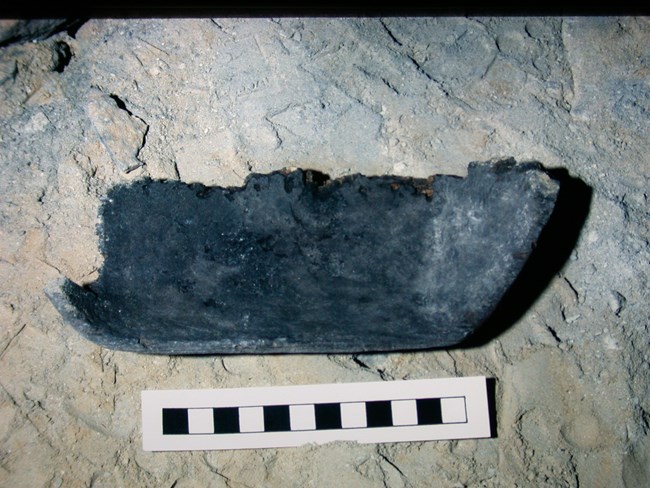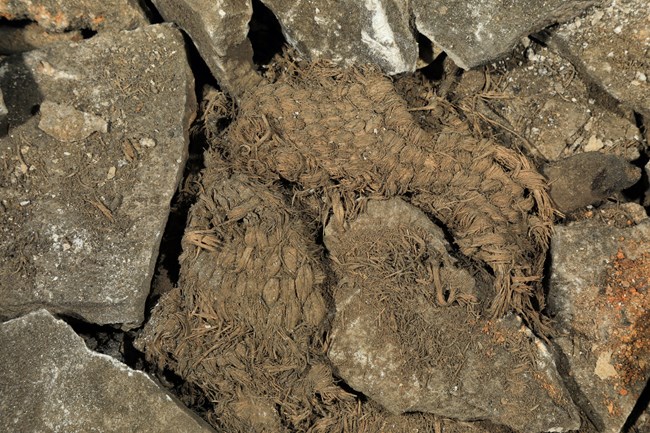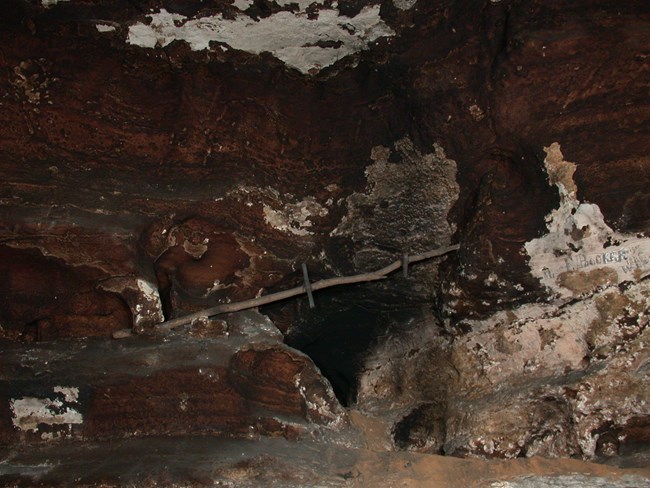Last updated: March 7, 2025
Article
Cave Discoveries From the Past

NPS Photo
Throughout the modern history of Mammoth Cave, discoveries of some of the earliest Indigenous people have been found throughout the cave. While most of the artifacts left behind are items like cane reed torches, mussel shells, gourd bowls, or woven sandals, there are instances of human remains being found near entrances or even miles back within the dark depths of the cave itself.
These discoveries were made many years ago, long before the Native American Graves Protection and Repatriation Act (NAGPRA) recognized that human remains of any ancestry "must at all times be treated with dignity and respect." The park works closely to consult with our tribal partners to discus ways in which we can share the facts of these stories in ways that respect their importance and serve to educate society on preserving and respecting all cultures.

NPS Photo
The Woman from Short Cave
In the early months of The War of 1812, the remains of an ancient Native American woman were found in the entrance of Short Cave. Her remains were very well preserved within the cave environment and created a curiosity amongst the cave owners and people of the day. While there is little known about the origins or passing of the woman, it is thought that she was likely an older, respected member of her society. What we do know is that her discovery became a well known story in Mammoth Cave’s history.
The burial site of the ancient woman was described in a letter by Charles Wilkins, owner of Mammoth Cave during the early 1800’s. He wrote,
“ … found at a depth of 10 feet from the surface of the cave in a sitting posture, encased in broadstones, standing on their edges, with a flat stone covering the hole. It was enveloped in coarse clothes, wrapped in deer skins, enclosed in the stone coffin where the working utensils, beads, feathers, and other ornaments of dress, which belonged to her.”
After the discovery, the woman’s body was removed and relocated to the first large room inside the natural entrance of Mammoth Cave, now known as the Rotunda. The placement of the remains did not sit well with the enslaved African American workers of the saltpetre mining operation that actively used the Rotunda for their work. The owners of the cave soon moved the remains away from the mining operation to an upper level passage known as Gothic Avenue and placed on a ledge.
An early tourist to see the remains was Nahum Ward, a businessman and wealthy landowner from Marietta, Ohio. Ward petitioned the American Antiquarian Society (AAS) to procure the ancient remains for protection in its museum holdings, but rather than protecting the remains, Ward kept them and included them in a traveling expedition that toured the country. This caused the remains to suffer much deterioration and damage due to the storage and transportation from site to site.
The woman’s remains were eventually passed from Ward to AAS in 1817, but they continued to be in the public eye for some time. They were exhibited at World’s Fairs of 1876 and 1893 as the “Mammoth Cave Mummy.”
In 1876 Isaiah Thomas, founder of the AAS transferred the remains to the Smithsonian Institution where they currently remain.

NPS Photo
An Unexpected Discovery
In 1935, a small group of men who worked for the Civilian Conservation Corps (CCC) was exploring a high ledge in an area about 2.5 miles (4.0 km) from the Historic Entrance to Mammoth Cave. Upon climbing onto the ledge, the men discovered the remains of an ancient Native American who had likely been mining the mineral gypsum from inside the cave when he had been trapped beneath a large boulder.
It appeared the man had been laying on his back, under the boulder, and had accidently dislodged it, causing it to fall and trap him for thousands of years. After the discovery, the man’s remains were removed to be studied and then put on display along the Historic Tour route. He remained there for many years.
Decades later, in the 1970s, the miner was removed from display as sentiments toward the display of human remains changed and it was no longer seen as appropriate. The man’s remains were returned to a secret location within Mammoth Cave where he can now rest, unbothered by the public.
